Kashk Bademjan, or Persian Eggplant Dip as we call it in English, is a savory, healthy appetizer. This Persian dip recipe is simple to make with nothing but eggplant, onion, garlic, kashk, mint, and a touch of turmeric. This is a classic Persian appetizer made healthier and modern!
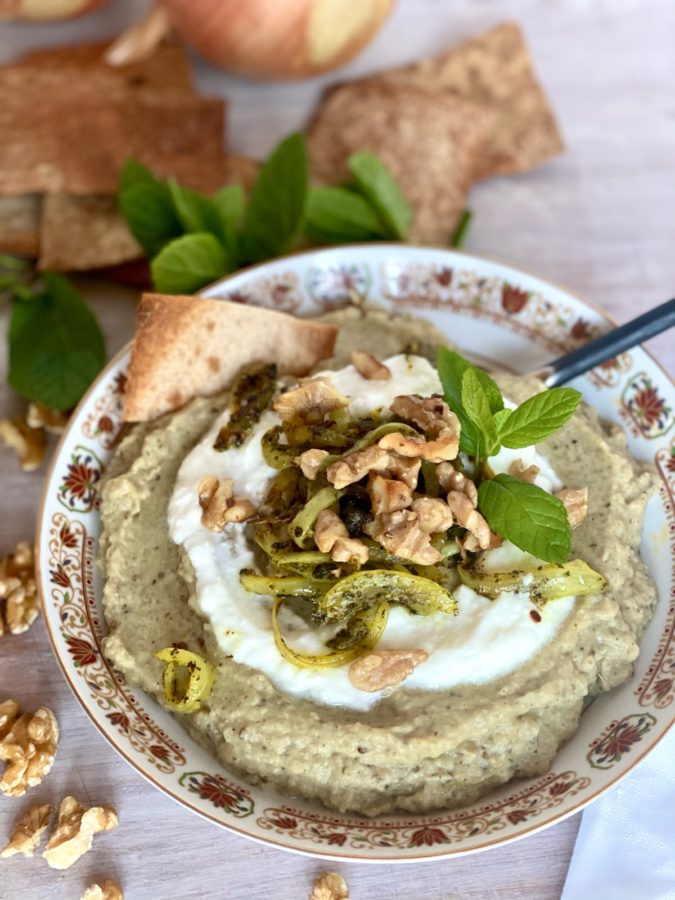
If you have had Middle Eastern food then chances are you’ve tried some form of a super delicious eggplant dish.
Kashk is the word used for cooked down yogurt to curds which are then strained and dried. Although I have yet to make my own kashk, from what I understand, the technique for straining yogurt is similar to the process for making cheese – boil, stir, and strain using a cheesecloth leaving a type of yogurt curd to dry. Thankfully, kashk can be purchased ready-made at Middle Eastern or Iranian markets. It is available in dry or a more liquid, yogurt-type consistency. Kashk has a unique sour, salty, almost umami flavor.
Acceptable substitutes for kashk in this recipe are plain yogurt or sour cream. My mom-in-law sometimes sneaks in some ranch dressing!
Another term for a Persian mixed eggplant dip is ‘borani’. There are many versions of ‘boranis’ in Persian cuisine. In a nutshell, they are typically simple yogurt dips mixed with cooked vegetables such as eggplant, spinach, squash, or pumpkin.
Many Middle Eastern cultures have their own version of eggplant with yogurt recipes. There are varieties from Turkey and Lebanon.
Middle Eastern eggplant side dishes:
- baba ganoush (usually originating from Lebanon or Syria)
- zaalouk (from Morocco)
- boranis (many cultures including Persian and Turkish)
The delicious combination of eggplant and Kashk or yogurt goes beyond the Middle East as well and can be found in its own versions in Russia and Greece. Some have tomato and subtle differences in ingredients and spices.
Persian bademjan (eggplant) is sure to please even picky, non-eggplant eaters it’s that good!
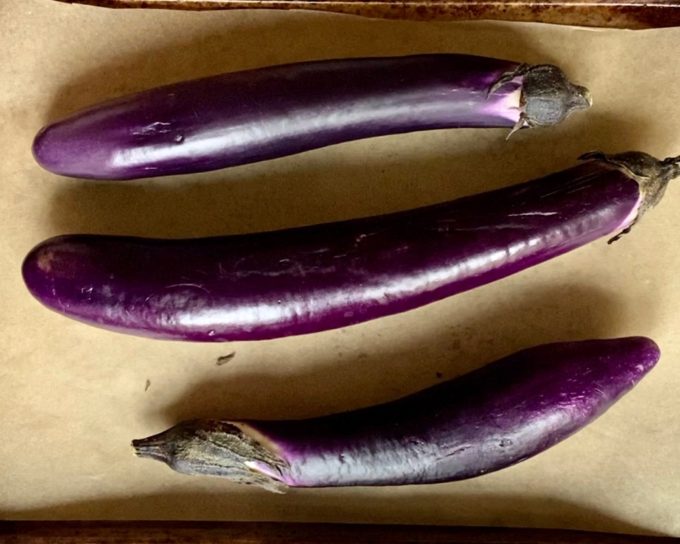
What type of eggplants should be used in Persian Eggplant Dip?
When choosing the eggplants any variety will do. I like using Chinese eggplants.
Chinese eggplant cooks up faster and the results are very delicious. These eggplants have thinner skin and a more delicate taste. In traditional eggplants, the seeds can taste a bit bitter. The Chinese variety of eggplant also tastes sweeter.
What spices are used in this dip?
A few Persian pantry essentials are used in this recipe, like fresh mint and turmeric.
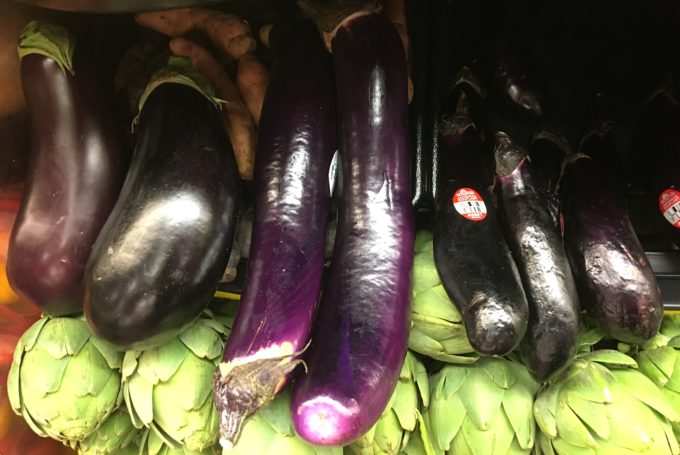
standard eggplants on the far left, Chinese eggplants in the center, Japanese eggplants (much smaller) on the far right.
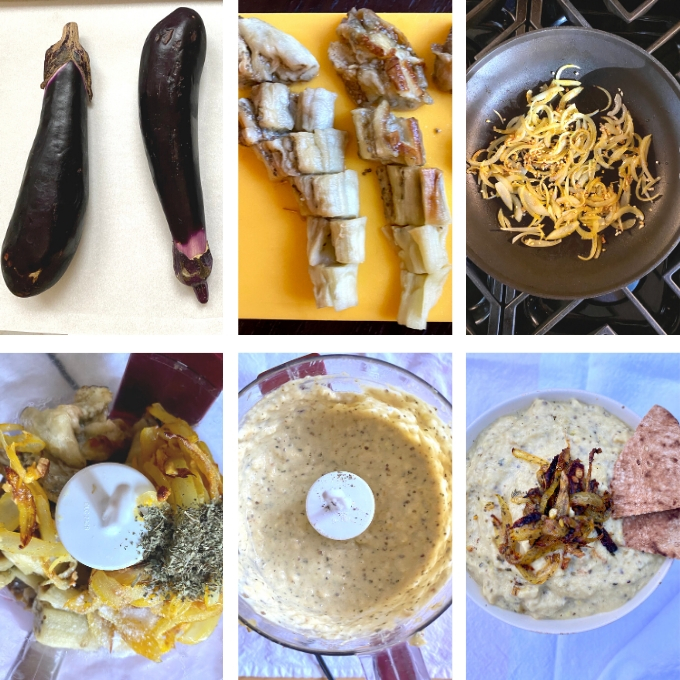
Steps for making this dip:
- Bake whole eggplants on a baking sheet for 30 to 40 minutes, flipping them over every 10 minutes. Let cool once finished.
- Slice one whole onion and saute it in olive oil for 2 to 3 minutes. Add garlic to cooking onions and saute for 2 to 3 more minutes.
- Add turmeric to the onion/garlic mixture and saute for 1 to 2 more minutes. Set aside.
- Chop the stem off the cooked eggplants. Then peel eggplant. Cut into chunks and add to a food processor.
- Add 3/4 of the cooked onion mixture, 1/4 teaspoon of dried mint, and salt to the food processor. Pulse and blend until relatively smooth.
- Add the kashk (or yogurt) and pulse. Taste and add salt if necessary.
- Saute the remaining one-quarter of the cooked onion mixture one last time with the remaining 1/2 teaspoon of dried mint until crispy.
- Place the pureed eggplant dip in a serving bowl or dish and top with remaining onion and mint.
- Enjoy as a side dish or as an appetizer served with crackers or bread.
A variation in my recipe is that instead of frying the eggplant, I bake it to cut down on oil and to keep it light and healthy!
Watch this step-by-step video showing how to roast eggplants whole and simple with no oil required:
Tips & tricks
- Eggplants come in a variety of shapes and sizes. Standard eggplants that are on the larger side take longer to cook. If using standard-sized large eggplants only 2 are needed. Cook times will be 40 minutes or more.
- With Chinese eggplant, they are smaller and skinner with more delicate skin. Use 3 and cook for about 30 to 40 minutes.
- Japanese eggplants are the smallest and cook up the most quickly. Use 4 or 5. They will be ready in about 30 minutes.
- With all of the varieties set a timer and turn them every 10 minutes. When they start to shrivel and the skin of the eggplant looks wrinkly, they are cooked.
- A trick to help with peeling the skin off is to place the cooked and slightly cooled eggplants in a paper bag to continue cooling off. The steam in the bag will help to make peeling the skins easier.
Serve Persian Eggplant Dip as an appetizer with whole wheat pita bread as a healthy snack. It is a beautiful, tasty side dish alongside some Persian Rice or Loobia Polo.
I hope you enjoy it as much as we do!
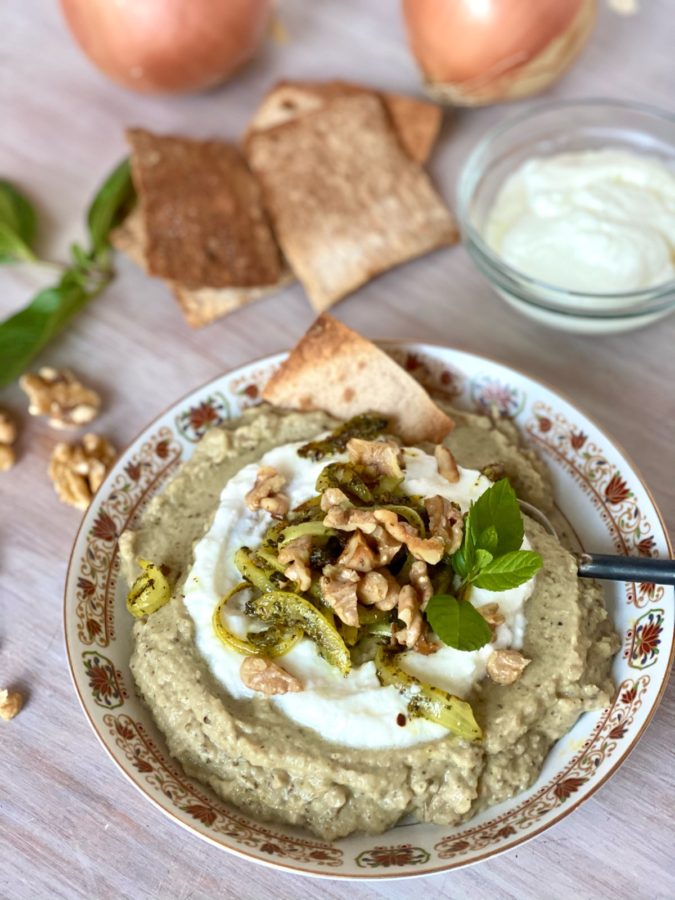
My favorite way to enjoy Persian eggplant dip, kashk bademjan is with crunchy whole wheat lavash crackers. I toast whole wheat lavash bread cut in slices with some oil and spices and toast it in our air fryer. Mmm! So good.

Persian Cucumber Yogurt Dip and Deconstructed Persian Herb Sandwich.
Kashk Bademjan | Persian Eggplant Dip
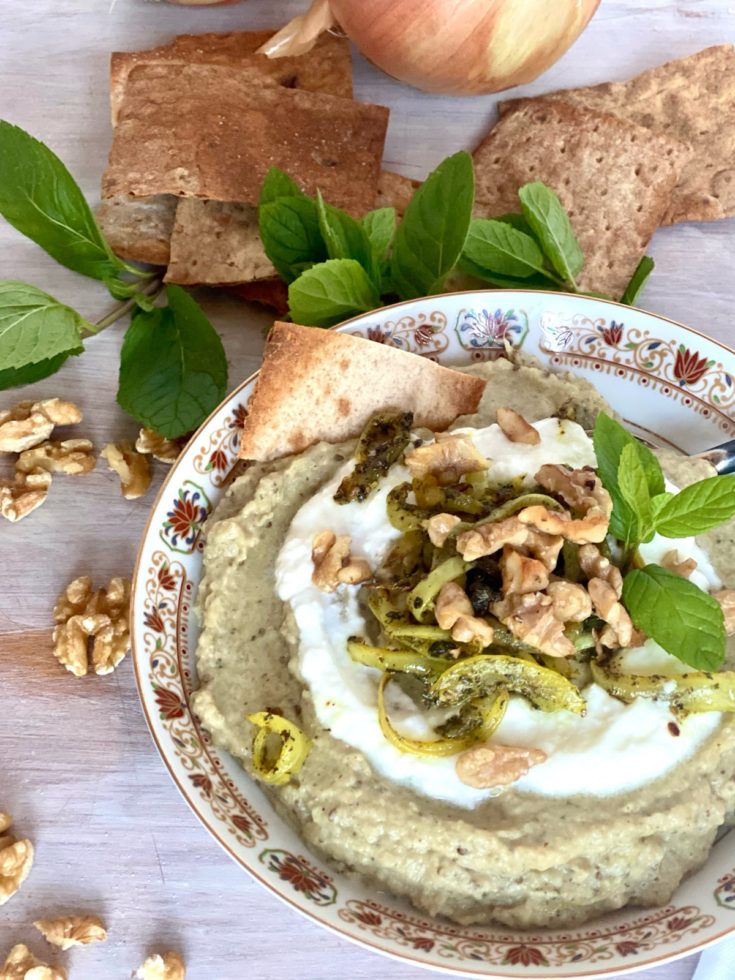
Kashk Bademjan, or Persian Eggplant Dip as we call it in English, is a savory, healthy appetizer. This Persian dip recipe is simple to make with nothing but eggplant, onion, garlic, kashk, mint, and a touch of turmeric. This is a classic Persian appetizer made healthier and modern!
Ingredients
- 3 to 4 small Chinese eggplants
- 1 medium onion, sliced
- 2 Tablespoons olive oil
- 3 cloves of garlic or 3 teaspoons minced garlic
- 1/4 teaspoon turmeric
- 1/2 tsp + 1/4 tsp dried mint
- 1 cup kashk
- 1/2 teaspoon salt
- pepper to taste
Instructions
- Preheat oven to 350 F.
- Bake whole eggplants on a baking sheet for 30 to 40 minutes (depending on the variety - see recipe notes), flipping them over every 10 minutes. Let cool once finished.
- Slice one whole onion and saute it in olive oil for 2 to 3 minutes. Add garlic to cooking onions and saute for 2 to 3 more minutes.
- Add turmeric to onion/garlic mixture and saute for 1 to 2 more minutes. Set aside.
- Chop the stem off the cooked eggplants. Then peel eggplant (see recipe notes on peeling eggplant). Cut into chunks and add to a food processor.
- Add 3/4 of the cooked onion mixture, 1/4 teaspoon of dried mint, and salt to the food processor. Pulse and blend until relatively smooth.
- Add the kashk and pulse. Taste and add salt if necessary.
- Saute the remaining one-quarter of the cooked onion mixture one last time with the remaining 1/2 teaspoon of dried mint until crispy.
- Place the pureed eggplant dip in a serving bowl or dish and top with remaining onion and mint.
- Enjoy as a side dish or as an appetizer served with crackers or bread.
Notes
Oven temperature - depending on the size of the eggplant and the oven, I sometimes need to turn the temperature up to 375 degrees F. Access how well the eggplants are cooking when you are flipping them every 10 minutes. They should become wrinkly and soft. If they are remaining stiff and smooth, increase the oven temperature to 375.
- Eggplants come in a variety of shapes and sizes. Standard eggplants that are on the larger side take longer to cook. If using standard-sized large eggplants only 2 are needed. Cook times will be 40 minutes or more.
- With Chinese eggplant, they are smaller and skinner with more delicate skin. Use 3 and cook for about 30 to 40 minutes.
- Japanese eggplants are the smallest and cook up the most quickly. Use 4 or 5. They will be ready in about 30 minutes.
- With all of the varieties set a timer and turn them every 10 minutes. When they start to shrivel and the skin of the eggplant looks wrinkly, they are cooked.
- A trick to help with peeling the skin off is to place the cooked and slightly cooled eggplants in a paper bag to continue cooling off. The steam in the bag will help to make peeling the skins easier.
Acceptable substitutes for kashk in this recipe:
- plain yogurt
- sour cream
- ranch dressing
Nutrition Information:
Yield:
4Serving Size:
1Amount Per Serving: Calories: 275Total Fat: 8gSaturated Fat: 1gTrans Fat: 0gUnsaturated Fat: 6gCholesterol: 2mgSodium: 103mgCarbohydrates: 48gFiber: 12gSugar: 21gProtein: 9g
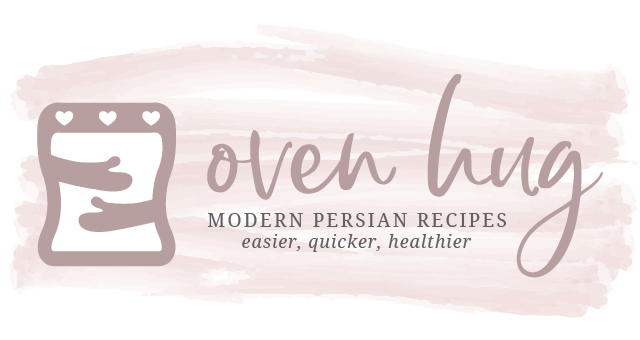

Leave a Reply